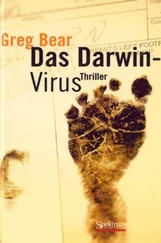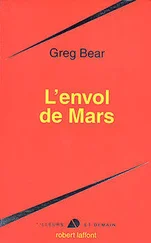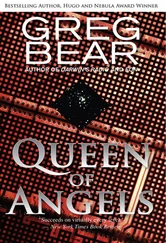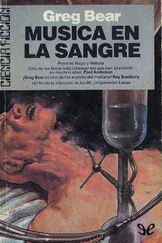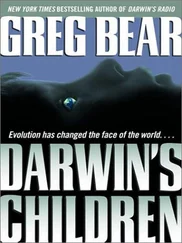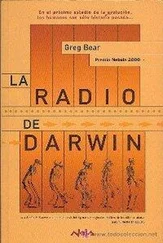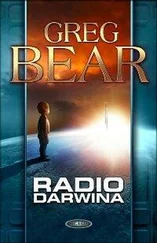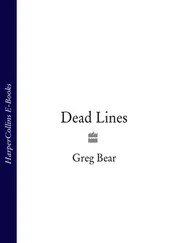Gary Phillips, science advisor to the president, stood and approached the lectern. “The president wishes me to convey his appreciation. We had hoped for so much more, but no research effort in any other nation has done better than the NIH and the CDC Taskforce. We have to realize we face an extremely clever and versatile opponent, and we have to speak with one voice, with resolve, to avoid pushing our nation into anarchy. That is why I have listened to Dr. Robert Jackson and to Mark Augustine. Our situation now is very sensitive, publicly sensitive, and they tell me there is a potentially divisive disagreement between some members of the Taskforce, especially within the Americol contingent.”
“Not a split,” Jackson said acidly. “A schism”
“Dr. Lang, I have been informed you do not share some of the opinions expressed by Dr. Jackson and Mark Augustine. Could you please express and clarify your point of view now, so that we may judge them?”
Kaye sat in shock for a few seconds, then stood up and managed to say, “I don’t believe a fair hearing can be given now, sir. I am apparently the only person in this room whose opinion differs from the official statement you’re obviously preparing.”
“We need solidarity, but we need to be fair,” the science advisor said. “I’ve read your papers on HERV, Ms. Lang. Your work was seminal and brilliant. You could very well be nominated for a Nobel prize. Your disagreements have to be listened to, and we’re prepared to listen. I regret nobody has the luxury of sufficient time. I wish we did.”
He motioned for her to come forward. Kaye walked to the lectern. Phillips stepped aside.
“I’ve expressed my opinions in numerous conversations with Dr. Dicken, and in one conversation with Ms. Cross and Dr. Jackson,” Kaye said. “This morning, I put together a folder of supporting articles, some of them my own, and evidence gleaned from studies in the Human Genome Project, evolutionary biology, even paleontology.” She opened her briefcase and handed the stack of folders to Nilson, who passed them to her left.
“I do not yet have the conclusive linchpin that holds my theories together,” Kaye continued, then sipped from a cup of water handed to her by Augustine. “Scientific evidence from the Innsbruck mummies has not yet been released to the public.”
Jackson rolled his eyes.
“I do have preliminary reports on evidence gathered by Dr. Dicken in Turkey and the Republic of Georgia—”
She spoke for twenty minutes, focusing on specifics and on her work with transposable elements and HERV-DL3. She came to an uncertain close by describing her successful search for different versions of the LPC on the same day she heard from Jackson that mutations in SHEVA had been located. “I believe SHEVA-X is a backup or alternate response to the failure of initial lateral transmissions to produce viable children. Second-stage pregnancies induced by SHEVA-X will not be open to herpes viral interference. They will produce healthy and viable infants. I have no direct evidence for this; no such infants have been born that I’m aware of. But I doubt we’ll have to wait long. We should be prepared.”
Kaye was surprised that she had spoken as coherently as she had, yet she was miserably aware she could not possibly succeed in turning the tide. Augustine watched her closely, with some admiration, she thought, and he gave her a quick smile.
“Thank you, Dr. Lang,” Phillips said. “Questions?”
Frank Shawbeck raised his hand. “Does Dr. Dicken support your conclusions?”
Dicken stepped forward. “I did for a time. Recent evidence convinced me I was wrong.”
“What evidence?” Jackson called out. Augustine waggled his finger in warning, but allowed the question.
“I believe SHEVA is mutating as a disease organism mutates,” Dicken said. “Nothing convinces me it is not acting as a human pathogen.”
“Isn’t it true, Dr. Lang, that previous supposedly noninfec-tious forms of HERV have been associated with some kinds of tumors?” Shawbeck asked.
“Yes, sir. But they’re also expressed in noninfectious form in many other tissues, including placenta. We only now have the opportunity to understand the many roles these endogenous retroviruses may play.”
“We don’t understand why they are in our genome, in our tissues, do we, Dr. Lang?” Augustine asked.
“Until now, we knew of no theory that could explain their presence.”
“Other than their actions as disease-causing organisms?”
“Many substances in our bodies are both positive and necessary and yet, on occasion, are implicated in disease,” Kaye responded. “Oncogenes are necessary genes that can also be provoked to cause cancer.”
Jackson raised his hand. “I’d like to scotch this argument with an approach from an evolutionary perspective,” he said. “While I’m not an evolutionary biologist, and I’ve never even played one on TV…”
Chuckles from all in the crowd but Shawbeck and the VP, still stony faced.
“…I believe I had enough of the paradigm drummed into me in school and university. The paradigm is that evolution proceeds by random mutations within the genome. These mutations alter the nature of the proteins or the other components expressed by our DNA, and are usually detrimental, causing the organism to sicken or die. Yet over deep time, and under changing conditions, mutations may also create novel forms that confer positive advantages. Am I correct so far, Dr. Lang?”
“That is the paradigm,” Kaye acknowledged.
“What you seem to be implying, however, is a hitherto undiscovered mechanism whereby the genome takes control of its own evolution, somehow sensing the right time to bring about change. Correct?”
“As far as it goes,” Kaye said. “I believe our genome is much more clever than we are. It’s taken us tens of thousands of years to get to the point where we have a hope of understanding how life works. The Earth’s species have been evolving, both competing and cooperating, for billions of years. They’ve learned how to survive under conditions we can barely imagine. Even the most conservative biologist knows different kinds of bacteria can cooperate and learn from each other — but many now understand that different species of metazoans, plants and animals like us, do much the same thing when they play their roles in any ecosystem. The Earth’s species have learned how to anticipate climate change and respond to it in advance, get a head start, and I believe, in our case, our genome is now responding to social change and the stress it causes.”
Jackson pretended to work these ideas through in his head before asking, “If you were a graduate advisor and one of your students were to propose doing a thesis on this possibility, would you encourage them?”
“No,” Kaye said bluntly.
“Why not?” Jackson pursued.
“It is not a widely defended point of view. Evolution has been a very closed-minded field in biology, and only the brave few challenge the paradigm of the Darwinian Modern Synthesis. No grad student should try it alone.”
“Charles Darwin was wrong, and you’re right?”
Kaye turned to Augustine. “Is Dr. Jackson conducting this inquisition all by himself?”
Augustine stepped forward. “This is an opportunity to answer your opponents, Dr. Lang.”
Kaye swung back and faced Jackson and the audience, eyes narrowed. “I do not challenge Charles Darwin, I have immense respect for him. Darwin would have recommended we not set our ideas in stone before we understood all the principles. I do not even reject many of the principles of the modern synthesis; quite clearly, whatever the genome devises has to pass the test of survival. Mutation is a source of unexpected and sometimes useful novelty. But there has to be more to explain what we see in nature. The modern synthesis was devised during a period when we were just beginning to learn the nature of DNA and establish the roots of modern genetics. Darwin would have been fascinated to know what we know today, about plasmids and exchange of free DNA, about error correction within the genome, about editing and transposition and hidden viruses, about markers and gene structure, about all manner of genetic phenomena, many of which do not fit at all neatly into the most rigid interpretations of the modern synthesis.”
Читать дальше
Конец ознакомительного отрывка
Купить книгу

